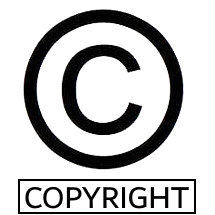Retin-A (Tretinoin) For Acne Treatment
Table of Contents
Your guide to treating acne with Retin-A, Retin-A Micro, and Generic Tretinoin
Retin-A (tretinoin) is a medication (Rx in some countries) used to treat mild to moderately severe acne. It belongs to a group of medications called topical retinoids, medications that are derived from vitamin A. Retin-A can help improve inflammatory acne, and it’s one of the few acne medications that also work especially well for treating comedonal acne (lots of blackheads and whiteheads).
This medication comes in both gel and cream forms. It’s used topically, so you apply it directly to your skin wherever acne breakouts are a problem. The treatment may cause some side effects that you should know about but can take steps to manage.
How Retin-A Works
Retin-A works as a comedolytic, to keep pore blockages from forming. When your pores aren’t clogged, pimples and blackheads can’t develop. First, Retin-A speeds up cell turnover rates, rapidly exfoliating your skin and decreasing the buildup of dead cells within the follicle (AKA pore). This reduces the formation of comedones, which are the beginnings of every pimple.
Retin-A also makes existing blackheads less “sticky,” helping the plugs make their way to the surface to be expelled. As it exfoliates your skin and clears out the follicles, it can make enlarged pores look smaller too.
Acne Scars and Dark Marks
Unfortunately, Retin-A won’t get rid of depressed, pitted, or raised acne scars. Retin-A stimulates new skin cell growth, so it will give your skin a more smooth, even texture. This can make superficial acne scars less obvious. But for anything other than the most minor of scarring, you’ll need professional scar treatment procedures to see good results or chemical peels under strict cosmetician supervision.
However, if pimples leave dark discolorations on your skin after they have healed, Retin-A can help fade those marks. Those spots aren’t true scars but rather post-inflammatory hyperpigmentation. As Retin-A causes skin cells to shed more quickly, it also helps eliminate excess melanin (the protein that gives skin its color and, in the case of hyperpigmentation, excess color).
Tretinoin Anti-Aging Benefits
The benefits of Retin-A go beyond just treating acne. It’s also a popular anti-aging treatment. Retin-A reduces the look of fine lines and wrinkles, and makes the complexion brighter and smoother. If you have adult acne, and aging is a concern of yours, you’ll clear your skin while getting this added benefit as well.
Retin-A Formulations
Retin-A is a brand name for the medication Tretinoin. There is no considerable difference between Retin-A and Tretinoin. Retin-A brand isn’t the only medication that contains tretinoin, either. Other medications that contain tretinoin are Retin-A Micro, Avita, Renova, and generic tretinoin.
Because they all contain the same active ingredient as Retin-A (tretinoin) they will all work in essentially the same way. The only differences between these medications are the vehicles. This is the term used to describe all of the other ingredients in the medication. The vehicle is used to deliver the active ingredient to your skin.
Retin-A and Retin-A Micro, for example, are different versions of tretinoin. Retin-A Micro is formulated to release its medication more slowly. Because of this, it can be less irritating and less drying than traditional Retin-A.
Tretinoin vs. Isotretinoin
There is a big difference between tretinoin and isotretinoin. Although they sound alike, these medications aren’t interchangeable. While tretinoin is the active ingredient in Retin-A and Retin-A Micro, isotretinoin is better known by the trade name (and now defunct brand) Accutane. Isotretinoin is taken in pill form, rather than a topical cream. It’s a powerful medication that’s reserved for severe inflammatory acne.
Retin-A vs. Retinol
Although the names sound incredibly similar, Retin-A and Retinol are not the same thing. Retinol is an over-the-counter ingredient found in many anti-aging products. Like Retin-A, Retinol is derived from vitamin A. But it’s not as strong as Retin-A and can’t be used interchangeably to treat acne.
During Pregnancy
Women who are breastfeeding or pregnant should not use Retin-A. It hasn’t been extensively studied in pregnant women. Oral tretinoin has been linked to birth defects. Although there’s no indication that topical tretinoin has the same effect, pregnant women are advised not to use topical tretinoin out of an abundance of caution. There are better acne treatment options for pregnant women that have proven track records, like Benzoyl Peroxide.
Possible Side Effects
Just like with all medications, you might notice some side effects when you start using Retin-A. These are the most common:
- Dryness, Flaking, and Peeling. Nearly all Retin-A users develop dryness of the skin, to some degree. You’ll probably get some peeling or flaking, and you may even notice some redness and itching. These are typically worse during the first few weeks, and gradually improve as your skin becomes more tolerant of the treatment.
- Stinging or Burning. When you first apply Retin-A, it might sting. You may feel a warming sensation; others describe it as burning. Your skin may even turn red for a while immediately after application. Don’t worry; this is all normal and typically subsides after a few minutes. If the burning is more than just a nuisance and seems excessive, stop using your medication and give your doctor a call.
- Photosensitivity. Retin-A causes photosensitivity. You’ll be much more susceptible to sunburn and sun damage while using this medication, even if you typically don’t burn. Stay out of the sun and away from tanning beds. Also, use a sunscreen with SPF of 30 or higher every day to protect your skin. Daily sunscreen use is a skin-healthy habit to have regardless.
What to Expect From Treatment
Most side effects are worst during the beginning weeks of treatment. Your skin may actually seem to get worse for a period of time, especially if it gets red or peels. Rest assured, this is generally normal and your skin will start to look and feel better as it develops a tolerance for the medication.
As far as acne goes, don’t expect any improvement immediately. You’re still going to get new pimples during this stage so expect them. This doesn’t mean Retin-A isn’t working. It just going to take a little time to see results. Try “feeling” for results first. Does your skin feel softer? Smoother? Less bumpy? That’s all good news and hints of things to come.
After several weeks of using Retin-A, you’ll find new pimples are smaller and not as red, and you don’t get them quite as often. It can take up to four months before acne is considerably under control, so don’t give up on treatment too soon.
After your skin has cleared up, you will have to continue to use your Retin-A treatment, although less frequently, to keep breakouts from returning. This is true for nearly all acne treatments, not just Retin-A.
If you’ve used Retin-A consistently for several weeks and still aren’t seeing improvement, your dermatologist might add another medication to your treatment routine or give you a new one to try. It’s disappointing if you don’t get the results you want from an acne treatment, but try not to get too discouraged. You’re one step closer to finding the combination of treatments that work for you.
Tips for Using Retin-A
Most people who use Retin-A will experience dryness and peeling to some extent. But with a little extra care on your part, you can limit irritation and reduce discomfort.
- Make sure you are using your medication as directed (more is not better!) Use gentle, non-medicated cleansers.
- A moisturizer will go a long way in soothing tight, dry skin too. Use a gentle, oil-free and non-medicated moisturizer at least twice per day, more often if needed.
- If the dryness and peeling are so bad that you just can’t take it, there are several things you can do to ease the irritation. First, use your medication every other day for a period of time. Once your skin feels better, you can start using it every day again. Another thing to try is applying your moisturizer first and Retin-A over the top. This helps buffer the medication just a bit.
- If your skin is particularly irritated try applying Retin-A for just a short time, say an hour or so, and then washing it off. Slowly build up the amount of time you wear the medication.
- Peeling skin driving you bonkers? Don’t use abrasive scrubs. These are too harsh for your skin right now. Instead, gently (the key word here is gently) remove some of the flaky skin with a soft washcloth as you wash your face.
- Use your Retin-A regularly. The results you get are directly related to how consistent you are with your treatment.
Conclusion
Like most acne medications, Retin-A takes time to work. You probably won’t see any change for several weeks, and it might take a few months before you really notice a big difference in our skin. Just keep at it and try to be patient. Your dermatologist is a great resource, so if you have any questions about your Retin-A medication or acne treatment in general, don’t be afraid to ask.
Post has taken from:
Written by: Angela Palmer
Medically reviewed by a board-certified physician

















